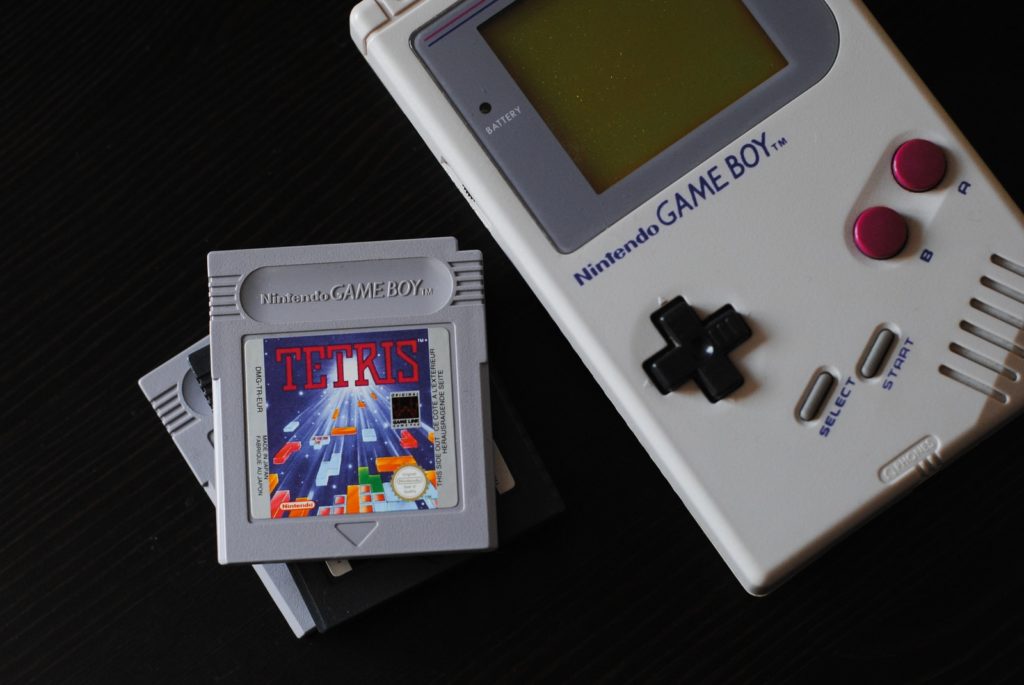In an age when mobile games are extremely popular, it’s easy to forget a time when they were played on handheld video game consoles, not smartphones. Throughout the 1990s and 2000s Japanese video game manufacturer Nintendo dominated the handheld market with its Game Boy product line. Its last entry was the Game Boy Advance, also known as the GBA.
Background
The Game Boy Advance is part of the sixth generation of video game production, which includes Nintendo’s own GameCube, the Microsoft Xbox, Sega Dreamcast, and Sony’s PlayStation 2. Developed, manufactured, and marketed as a 32-bit gaming console, the GBA was released in 2001 in most markets; China got it in 2004. The GBA is the direct successor of the Game Boy Color, which is notable for using a color screen instead of the black-and-white display of the original. Its manufacturer’s suggested retail price was $69.99.
Features
Weighing about 5 ounces, the Game Boy Advance has a 2.9-inch reflective thin-film transistor color LCD screen with a 240-by-160-pixel resolution. The handheld device runs on two AA batteries, which can provide around 15 hours of game play. A Zilog Z80 processor enables backward compatibility for Game Boy and Game Boy Color games. There’s a link port at the top of the unit to connect to other Game Boy devices via the Game Link Cable for multiplayer gaming. The port also enables connection to the GameCube via the GameCube Link Cable for playing GBA games on a TV screen or to use the GBA as a controller.
Games
Like other Nintendo game consoles, the Game Boy Advance supports thousands of titles, including those of earlier entries in the product line, as previously mentioned. However, the GBA is best known for ports of classic Nintendo Entertainment System (NES) or Super NES games like Super Mario Bros., Ghosts ‘n Goblins, The Legend of Zelda, Metroid, Castlevania, and Kid Icarus.
Success
Nintendo’s GBA had its share of competitors. The most notable were SNK’s Neo Geo Pocket Color and Nokia’s N-Gage. Others included the GP32, SwanCrystal, and Tapwave Zodiac. But none of these devices could topple the GBA from its perch. By the end of its production run, the GBA had sold a little over 80 million units, thus retaining the Game Boy brand’s majority market share.
Criticism and Revisions
Despite its success, the GBA was criticized for its lack of backlighting, which renders it unusable in normal lighting conditions. Also, with its large horizontal-rectangle design, some users thought it rather bulky in feel—in sharp contrast with the smaller, vertical-rectangle form of previous iterations. In response, Nintendo issued two revisions: the Game Boy Advance SP in 2003 and the Game Boy Micro in 2005. The SP was designed as a pocket-sized laptop computer, and it came with a brighter LCD screen and an internal front-light that can be switched on and off. The GBA Micro shares the form factor of the original but is significantly smaller. However, the Micro does not support Game Boy and Game Boy Color titles, a major reason why it was never popular.
Impact
The Game Boy brand has sold over 200 million units, making it the most successful handheld video game device of all time. The GBA is a huge part of that success, since it is responsible for close to half of the units sold. By the end of 2008, Nintendo had stopped manufacturing the GBA entirely. However, the company continues the GBA legacy by making its games available at the Virtual Console for the Wii U, Nintendo’s main entry in the eighth generation era.

